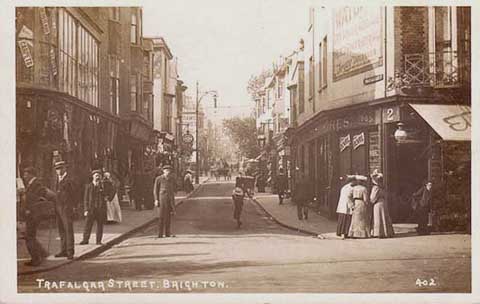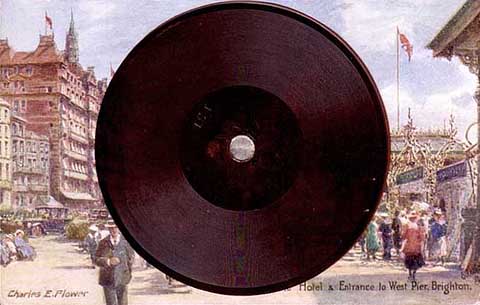|
Are you new to the hobby of postcard collecting? If so, you’ve already made a sensible choice in buying Picture Postcard Monthly. It is a magazine aimed solely at collectors of both old and modern postcards and is full of news and views on the hobby.
However, most of the articles and information are aimed at existing collectors who have already acquired the basic knowledge needed to get the hobby off the ground. With this column I hope, over the next few months, to redress the balance and help both complete novices and those who have recently taken up collecting to get the most out of it.
Your views / ideas/ questions will also be most welcome.
As with all hobbies, postcard collecting comes with a language all of its own. For many years I was baffled as to the meanings of the simplest words when used by collectors or PPM itself. To this end I think it would be a good idea to explain the most common terms that you will come across.
OLD - This is generally taken to be cards printed before the 1960’s and of a standard 140 x 89mm size.
MODERN - From the 1960s postcards were printed in a larger format (150 x 100mm).
EARLY - From 1894 until 1899 most cards (known as Court Cards) measured only 115 x 89mm. But generally undivided backs up until 1902 can also fit into this category.
UNDIVIDED / DIVIDED BACK - Before 1902 cards were only allowed to have an address on the non-picture side (so as not to confuse the postman!) but in January of that year the Post Office agreed to a dividing line to allow for both a message and the address to appear on the same side.
REAL PHOTOGRAPHIC (OR RP) - Images that have been produced by photographic rather than a printed process. They usually have a glossy finish. See card 1/.

Trafalgar Street, Brighton This is an example of a real photographic, topographical card.
PRINTED - A method used to enable mass production of what was originally a photographic image by splitting the original into dots and transferring it to a printing plate. The quality of the resulting cards varies quite considerably.

Brighton The Market. This is an example of a printed card.
TOPOGRAPHICAL (or TOPO) - Used to describe cards showing street scenes and general views where this is more dominant than a particular subject e.g. a tram.
SUBJECT - Any card that is not topographical.
NOVELTY - A postcard that is different from the normal. e.g. one with pull-out views or one that squeaks!

The West Pier, Brighton This is an example of a novelty card were a gramophone record has been stuck over an ordinary postcard.
CHROMO - Early cards using the finest colour printing methods, the best examples being developed by German printers. There were no ‘dots’ on the image as the colour was applied in solid blocks. The cards have a rich, deep colour with a shiny surface.
GRUSS AUS - Literally ‘Greetings From’ in German, these cards were highly pictorial.
SET - A number of cards linked in some way (e.g. by number) by a particular publisher and found usually in groups of six.
A/F OR WAF A term often seen on the reverse of a card, pencilled in by the Dealer. It is short for ‘all faults’ or ‘with all faults’ and indicates some damage to the card resulting in a lower than expected price. e.g. a creased corner.
BIPEX - Short for British International Postcard Exhibition. This is held annually, usually at the end of August, at the Royal Horticultural Halls in London, but has now changed its name to the Picture Postcard Show.
PTA - Short for Postcard Traders Association (not to be confused with Parent Teachers Association). An organisation for Dealers which promotes the hobby.
Hopefully this has cleared up any doubts you may have had as to what these words mean, obviously I have only defined what I think are the most commonly used terms.
Next article: Where to buy those elusive cards!
|


